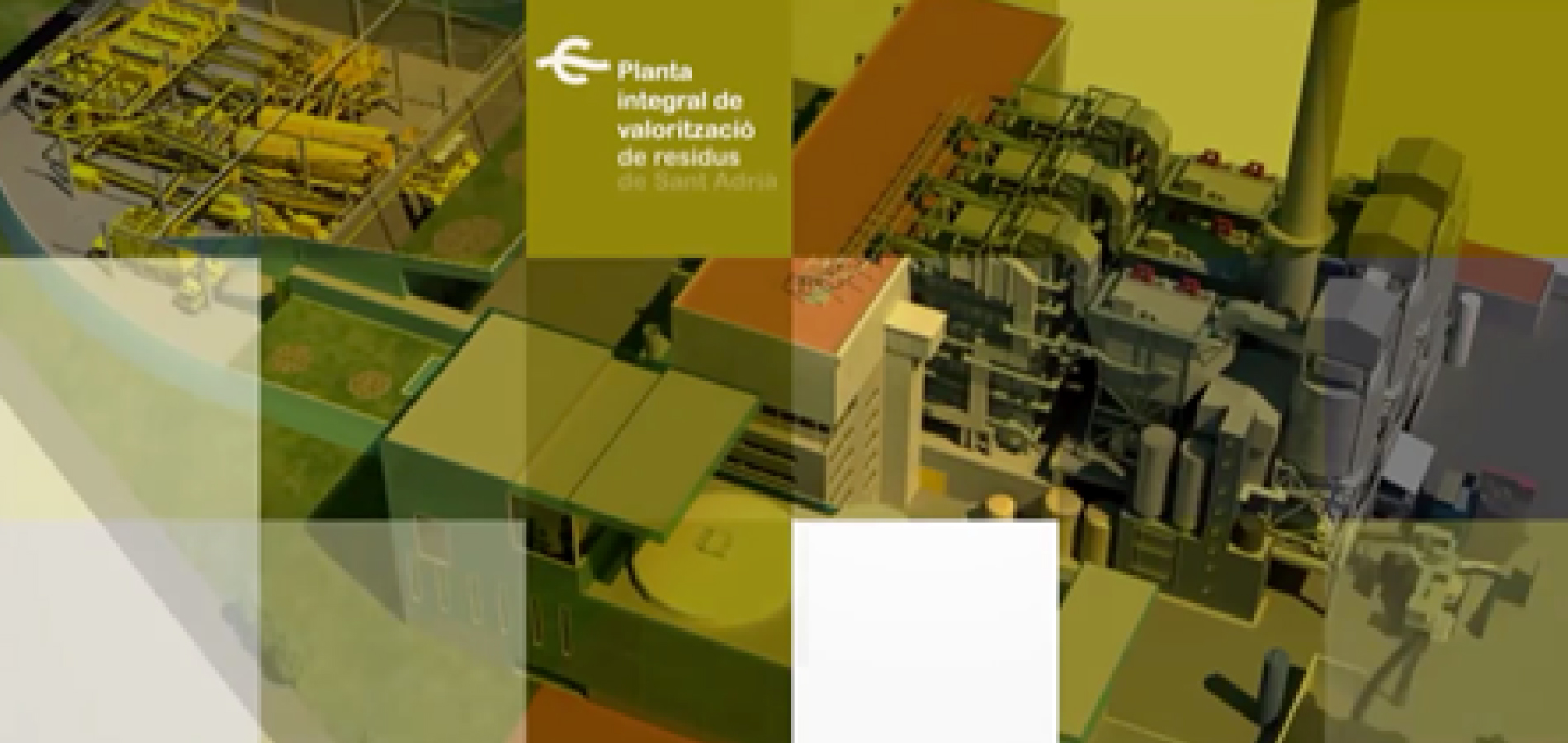Waste-to-Energy
Waste-to-energy is a process that reduces the amount of residues by incineration and that uses the generated energy to produce steam and electricity.
Of the electricity generated by the Waste-to-Energy facility 12% is for use in the same facility, the rest, 88% is sent to the electricity grid.
The waste that is incinerated by the facility also allows supplying steam to the urban network of heat and cold of the Forum and of district 22@, that way giving service to companies and citizens of that area of Barcelona.
TERSA is the company responsible for managing the activity of usage and energy transformation of the Waste-to-Energy Plant.
More than 100 buildings of the Forum and 22@ area are already connected to the urban heat and cold network.

Plant
The Integrated Waste Management Plant (PIVR) of Sant Adrià de Besòs includes two plants: the Waste-to-Energy Plant (PVE), managed by TERSA, and the Mechanical-Biological Treatment Plant, managed by Ecoparc del Mediterrani.
The Waste-to-Energy Plant of Sant Adrià de Besòs is a controlled combustion process of residues coming from mechanical-biological treatment plants, therefore considered as a non-recyclable fraction. This way, the volume of residues is considerably reduced and its heat power is used to generate electricity.
The materials resulting from this process are dross and ash. The bottom ash is waste-to-energy material that is used, for example, for production of ecologic concrete, and the fly ash is for controlled disposition.
The Waste-to-Energy Plant has the latest technology available for the correct control and surveillance of environmental and health safety. The facility has an ongoing measuring system: the data is monitored in the control room and supervised by the Direcció General de Qualitat Ambiental.
With this system is controlled at all times when the emissions continue below those established by current legislation.

Urban heat and cold network
The residues transformed by the Waste-to-Energy Plant allow the Districlima company to supply, tons of steam to the urban heat and cold network of the Forum and of district 22@.
The heat and cold urban network generates thermal energy (heat and/or cold) in a centralised production plant, which is distributed by a network system to the users connected to this system.
Sources of residual energy are used (urban solid residues) with high energy performance equipment, that way primary fossil energy consumption is reduced.
Resolving doubts about waste-to-energy
Waste-to-Energy is the transformation of those residues that cannot be recycled into energy, either into electricity, steam, or hot water for domestic or industrial use.
Waste-to-Energy is an activity that complements recycling. In fact, the countries that recycle the most, are also those that transform residues into energy reaching dumping rates below 3%. This way, waste-to-energy helps to achieve the objective of the European Union to reduce the amount of residues deposited in dumps.
After extracting the energy value from the residues, there is a negligible part of the solid sub-products like bottom and fly ashes. For example, the bottom ash can be reused as arid material in construction and as scrap in the iron and steel industry. Like any other residue, both are susceptible of being subject to a treatment for reusage, recuperation, waste-to-energy, or elimination.
The European Union regulations are implemented by the waste-to-energy plants following the maximum safety guarantees and are adapted to strict controls to not harm either the environment or citizens, thanks to latest generation industrial technologies.
Consult the following link to the latest scientific studies that reveal the low impact of the Waste-to-Energy Plant of Sant Adrià de Besòs on health and the environment:
According to the EU legislation the biodegradable fraction of municipal and industrial waste is considered biomass, thus a renewable energy source. The energy output from Waste-to-Energy plants is about 50% renewable.
Waste-to-Energy technology is one of the most robust and effective alternative energy options to reduce CO2 emissions and to save limited fossil fuel resources used by traditional power plants.
Sources of information:
Interesting data

342.827
tons of residues treated

198.437
MWh of electricity generated

125.239
tons of steam supplied to the urban heat and cold network
*Data corresponding to 2023

